Way back in 1974, Burger King launched a new advertising slogan that many of us remember, the “Have it your way…” jingle. That slogan continues until today in various markets. At times it has been modified – there was “Your way right away”, “When you have it your way, it just tastes better”, “Be your way”, and, simply, “Your way”…. But the original has persevered.
Still, the Japanese had them beat by a few years, with the “invention” of the “Have it your way” dish, the okonomiyaki (literally, okonomi means “what you like”, and yaki means “grill” or “cook”) somewhere in just a bit pre-WW2 Hiroshima. Somehow or other I doubt that in post-WW2 Hiroshima anyone was worrying about inventing new dishes. Too soon? Despite the times, it’s an idea that spread like wildfire – with regional adaptations springing up across Japan faster than Burger King could call a strategy meeting to plan new locations. The dish was a savory takeoff of a traditional dessert that was common at festivals all the way back to the earliest part of the Edo period, in the late 17th century).
So, just what is an okonomiyaki? It’s essentially a vegetable and/or meat filled pancake, topped with sauces and garnishes. And what those are is totally up to the person making it, or ordering it. There’s a great guide to the classic styles of okonomiyaki here. The version I’m going to walk you through today is more or less a take-off on the Osaka style. Okonomiyaki recipes are like recipes for any pancakes, anywhere – everyone has their own that they swear by. I don’t swear by this one as “the one”, but like the kimchi pancakes I showed you a week or two ago, it’s quick, easy, and delicious. And, more of you are likely to have these ingredients around than have kimchi just sitting in the fridge.
100 grams of cake flour (you can use all-purpose flour for this one) – with the flour I have, that was roughly 2/3 of a cup. About a ¼ teaspoon of salt (already in the flour). An egg. Okay, we’re done with the obligatory ingredients – the rest if all up to you. So this is what I had – about half of a small yellow bell pepper, cut into strips; a handful of coleslaw salad mix (white and red cabbage and carrots all cut in strips) that I’d bought for adding to soup; a green onion, the greens sliced thin on a diagonal to be pretty, the whites just chopped up; some bonito flakes, used for making dashi broth, but a common garnish for okonomiyaki; and, some chopped up bacon.
We also need to make our garnishing sauces….
I usually mix two sauces – one is generally called okonomiyaki sauce, and my version here is ketchup, a splash of worcestershire, and a splash of oyster sauce (if you don’t have it, just leave it out); the other is kewpie mayonnaise, which is a sweet and sour mayo common for Japanese street food and snacks – I just use regular mayo with splash of rice vinegar (apple cider vinegar if you don’t have it) and a good pinch of sugar.
Mix them up and you’re ready to go.
Add the flour, salt, and egg to the vegetables – including the pepper strips and the whites of the green onion. Mix it up well to get a sort of gooey mix. My version is probably heavier on the vegetable than a lot of okonomiyaki, I really just want enough batter to hold it all together – a lot of times they’ll look more like pancake batter with some vegetable in it. Again, have it your way!
Heat up a skillet over low to medium heat, add enough oil to coat the pan, and pour in the okonomiyaki mix. Use a spatula to flatten it out into a big round, about ¾ of an inch thick.
Scatter the bacon on top and press it in just enough so it sticks. Cook until the underside is browned and the top has started to set so that the bacon isn’t going to all fall off when you flip this.
Flip it over and cook the underside until bacon and pancake are nicely browned.
Remove your pancake from the skillet, drain it briefly on a paper towel, then flip it over so the bacon side is up on your plate.
Decorate generously with your sauces.
And, garnish with the slivered green onion tops and some of the bonito flakes. If you don’t have the latter, don’t worry about it – okonomiyaki are delicious without them.
Eat. Be Happy.
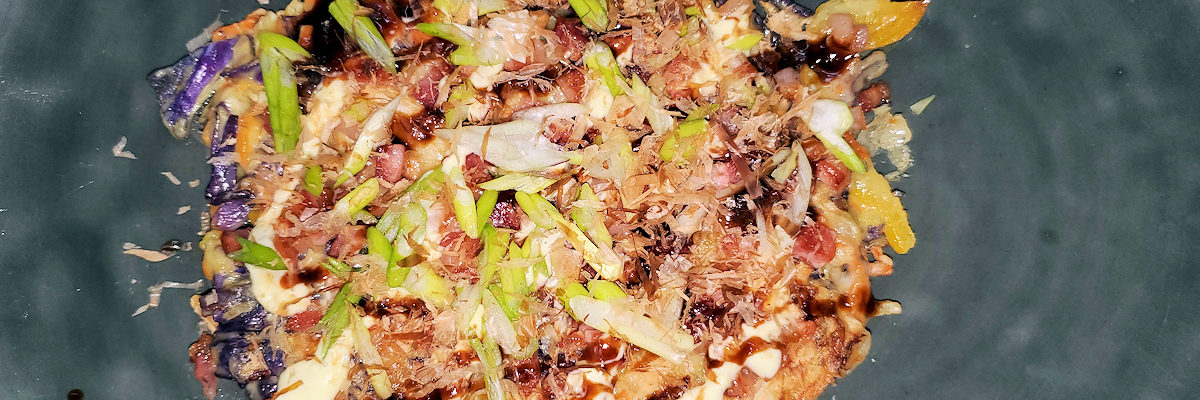
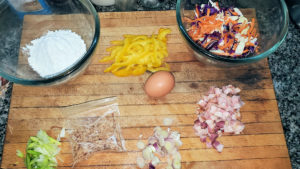
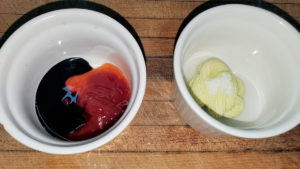
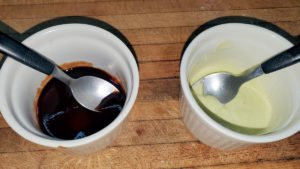
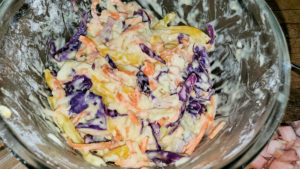
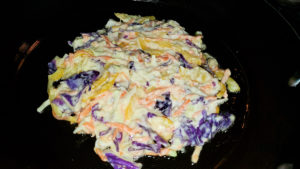
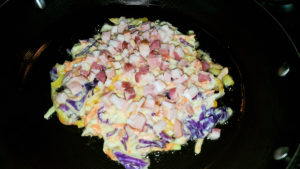
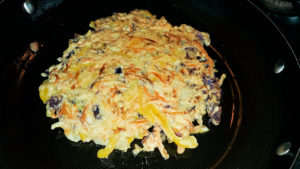
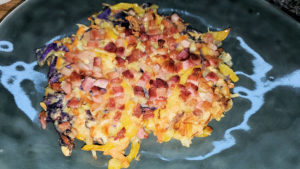
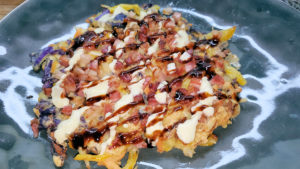
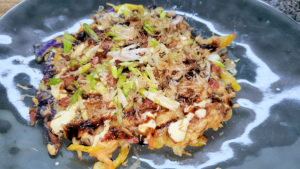
[…] pancakes, particularly variations on Korean kimchijeon and haemul pajeon, and more Japanese okonomiyaki than I care to […]